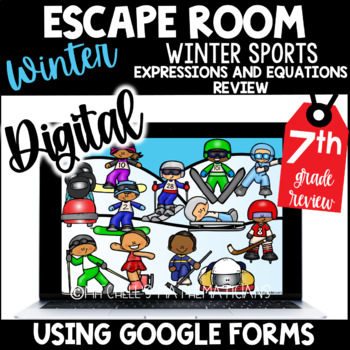7th Grade Winter Math Activity Digital Escape Room - Expressions and Equations
- PDF
- Google Apps™

Description
I am excited to share this distance learning DIGITAL ESCAPE ROOM task card activity with you and your students! It is completely digital (using Google Forms) and paperless which means no prep work for you. It is easy and self grading. Just send the link to your students and they can get started. It is great for virtual learning.
You have been waiting all winter for the biggest sporting events of the year. In order to watch all the events, the students will work to complete 12 different task. The tasks are based on the 7th grade expressions and equations CCSS. Once they have successfully complete a task, the students will be told that they are correct, and they can move onto the next task. Once they have completed all 12 tasks, they can submit their responses.
This would be a great WINTER activity to review after completing your expressions and equations unit.
Content Covered
- Simplifying expressions
- Solving one-step equations
- Solving multi-step equations
- Writing and solving equations from word problems
- Solving inequalities
- Solving inequality word problems
If you like this, here are a few end of the year digital escape rooms and winter digital escape rooms you may enjoy as well.
Some fun ways to connect....





